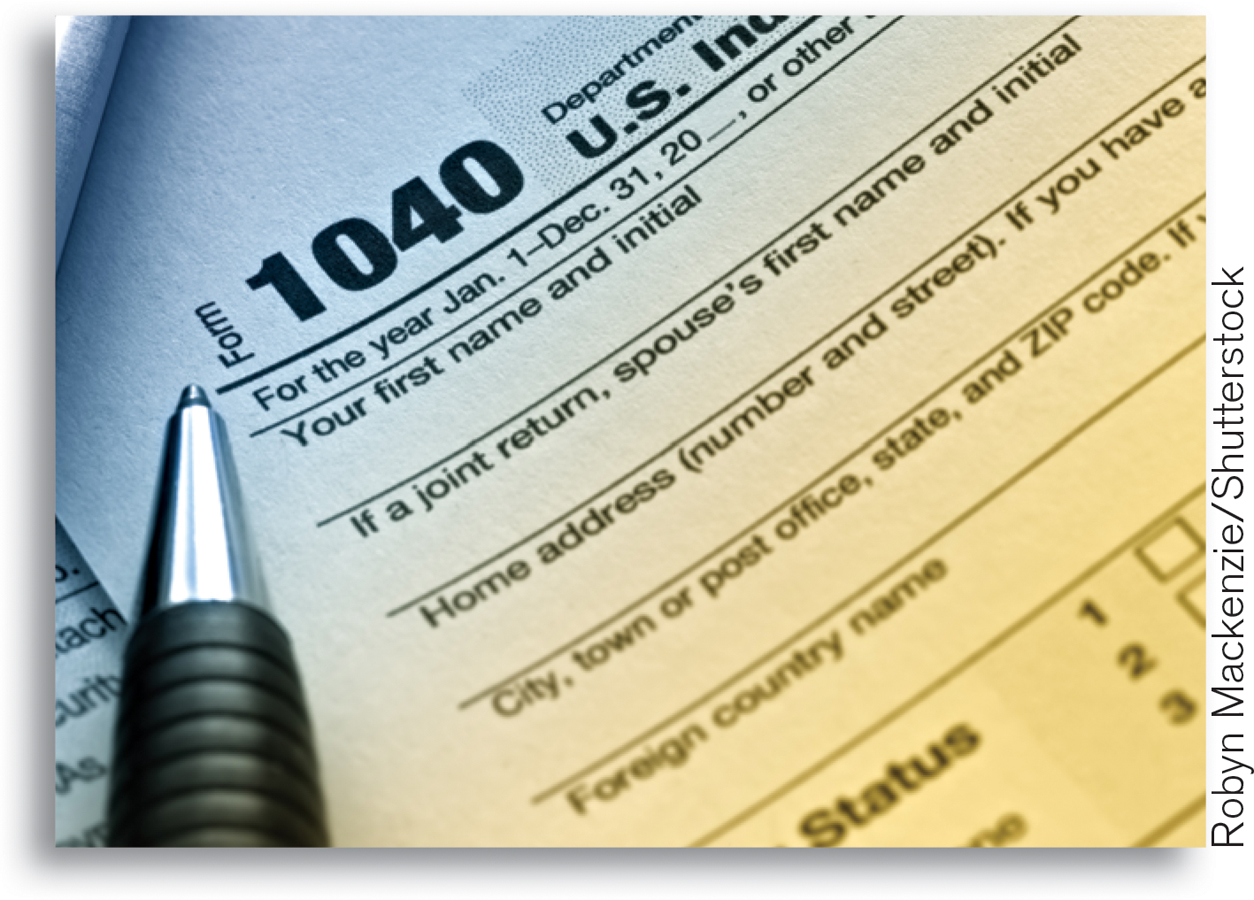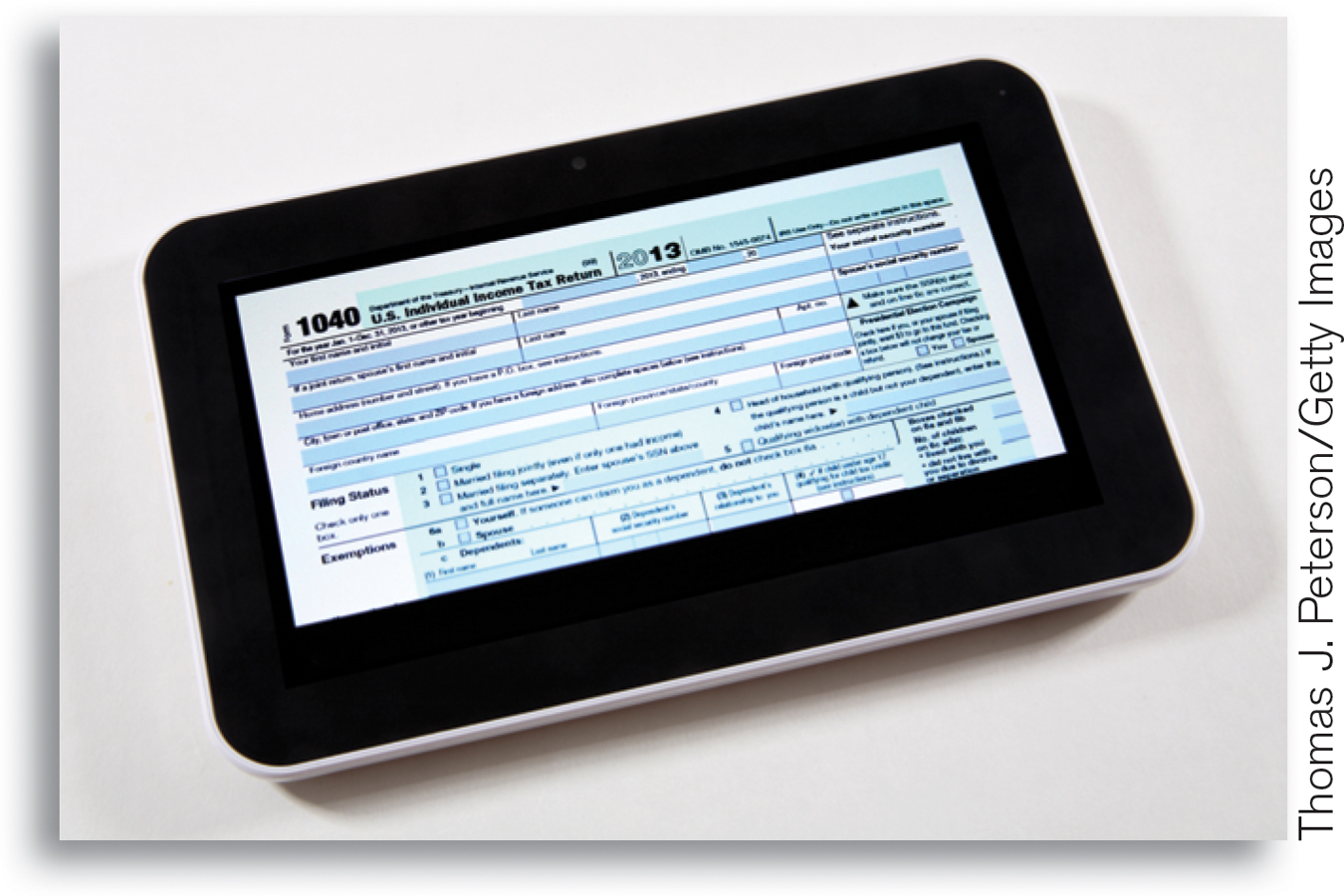Tax Fairness and Tax Efficiency
We’ve just seen how economic analysis can be used to determine the inefficiency caused by a tax. It’s clear that, other things equal, policy makers should choose a tax that creates less inefficiency over a tax that creates more. But that guideline still leaves policy makers with wide discretion in choosing what to tax and, consequently, who bears the burden of the tax. How should they exercise this discretion?
One answer is that policy makers should make the tax system fair. But what exactly does fairness mean? Moreover, however you define fairness, how should policy makers balance considerations of fairness versus considerations of efficiency?
Two Principles of Tax Fairness
Fairness, like beauty, is often in the eyes of the beholder. When it comes to taxes, however, most debates about fairness rely on one of two principles of tax fairness: the benefits principle and the ability-
According to the benefits principle of tax fairness, those who benefit from public spending should bear the burden of the tax that pays for that spending.
According to the benefits principle of tax fairness, those who benefit from public spending should bear the burden of the tax that pays for that spending. For example, those who benefit from a road should pay for that road’s upkeep, those who fly on airplanes should pay for air traffic control, and so on. The benefits principle is the basis for some parts of the U.S. tax system. For example, revenue from the federal tax on gasoline is specifically reserved for the maintenance and improvement of federal roads, including the Interstate Highway System. In this way motorists who benefit from the highway system also pay for it.
The benefits principle is attractive from an economic point of view because it matches well with one of the major justifications for public spending—
According to the ability-
Practical considerations, however, make it impossible to base the entire tax system on the benefits principle. It would be too cumbersome to have a specific tax for each of the many distinct programs that the government offers. Also, attempts to base taxes on the benefits principle often conflict with the other major principle of tax fairness: the ability-
The ability-
The Whiskey Rebellion described at the beginning of this chapter was basically a protest against the failure of the whiskey tax to take the ability-
Equity versus Efficiency
A lump-
Under the whiskey tax, the flat amount of tax paid by large distillers (in contrast to the per-
But the per-
In contrast, a lump-
In a well-
A tax system can be made fairer by moving it in the direction of the benefits principle or the ability-
It’s important to understand that economic analysis cannot say how much weight a tax system should give to equity and how much to efficiency. That choice is a value judgment, one we make through the political process.
ECONOMICS in Action: Federal Tax Philosophy
Federal Tax Philosophy

What is the principle underlying the federal tax system? (By federal, we mean taxes collected by the federal government, as opposed to the taxes collected by state and local governments.) The answer is that it depends on the tax.
The best-

The second most important federal tax, FICA, also known as the payroll tax, is set up very differently. It was originally introduced in 1935 to pay for Social Security, a program that guarantees retirement income to qualifying older Americans and also provides benefits to workers who become disabled and to family members of workers who die. (Part of the payroll tax is now also used to pay for Medicare, a program that pays most medical bills of older Americans.) The Social Security system was set up to resemble a private insurance program: people pay into the system during their working years, then receive benefits based on their payments. And the tax more or less reflects the benefits principle: because the benefits of Social Security are mainly intended to assist lower-
7-2
Share of Pre-Tax Income, Federal Income Tax, and Payroll Tax, by Quintile in 2010
|
Income group |
Percent of total pre- |
Percent of total federal income tax paid |
Percent of total payroll tax paid |
|---|---|---|---|
|
Bottom quintile |
5.1% |
–6.2% |
5.6% |
|
Second quintile |
9.6 |
–2.9 |
9.8 |
|
Third quintile |
14.2 |
2.9 |
15.4 |
|
Fourth quintile |
20.4 |
13.3 |
23.9 |
|
Top quintile |
51.9 |
92.9 |
45.1 |
|
Source: Congressional Budget Office. |
|||
TABLE 7-
Table 7-2 illustrates the difference in the two taxes, using data from a Congressional Budget Office study. The study divided American families into quintiles: the bottom quintile is the poorest 20% of families, the second quintile is the next poorest 20%, and so on. The second column shows the share of total U.S. pre-
As you can see, low-
Quick Review
Other things equal, government tax policy aims for tax efficiency. But it also tries to achieve tax fairness, or tax equity.
There are two important principles of tax fairness: the benefits principle and the ability-
to- .pay principle A lump-
sum tax is efficient because it does not distort incentives, but it is generally considered unfair. In any well-designed tax system, there is a trade- off between equity and efficiency . How the tax system should weight equity and efficiency is a value judgment to be decided by the political process.
7-3
Question 7.8
Assess each of the following taxes in terms of the benefits principle versus the ability-
to- pay principle. What, if any, actions are distorted by the tax? Assume for simplicity in each case that the purchaser of the good bears 100% of the burden of the tax. A federal tax of $500 for each new car purchased that finances highway safety programs
Since drivers are the beneficiaries of highway safety programs, this tax performs well according to the benefits principle. But since the level of the tax does not depend on ability to pay the tax, it does not perform well according to the ability-to-pay principle. Since higher-income car purchasers are likely to spend more on a new car, a tax assessed as a percentage of the purchase price of the car would perform better on the ability-to-pay principle. A $500-per-car tax will cause people to buy fewer new cars, but a percentage-based tax will cause people to buy fewer cars and less expensive cars.A local tax of 20% on hotel rooms that finances local government expenditures
This tax does not perform well according to the benefits principle because the payers are nonresidents of the local area, but the beneficiaries are local residents who will enjoy greater government services. But to the extent that people who stay in hotels have higher income compared to those who don’t, the tax performs well according to the ability-to-pay principle. It will distort the action of staying in a hotel room in this area, resulting in fewer nights of hotel room stays.A local tax of 1% on the assessed value of homes that finances local schools
This tax performs well according to the benefits principle because local homeowners are the users of local schools. It also performs well according to the ability-to-pay principle because it is assessed as a percentage of home value: higher-income residents, who own more expensive homes, will pay higher taxes. It will distort the action of buying a house in this area versus another area with a lower property tax rate or the action of making changes to a house that increase its assessed value.A 1% sales tax on food that pays for government food safety regulation and inspection programs
This tax performs well according to the benefits principle because food consumers are the beneficiaries of government food safety programs. It does not perform well according to the ability-to-pay principle because food is a necessity, and lower-income people will pay approximately as much as higher-income people. This tax will distort the action of buying food, leading people to purchase cheaper varieties of food.
Solutions appear at back of book.